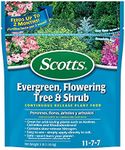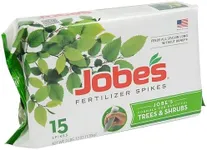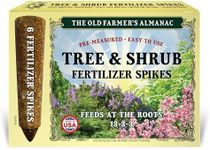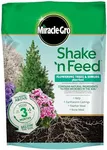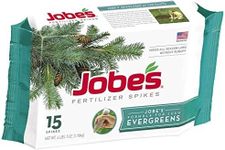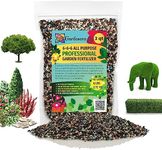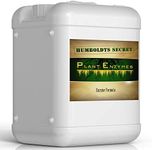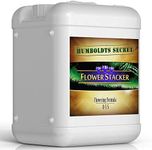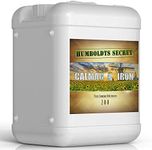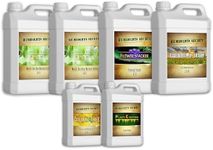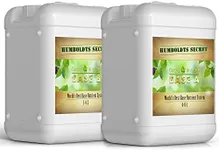Buying Guide for the Best Fertilizer For Trees And Shrubs
Choosing the right fertilizer for your trees and shrubs is essential for their healthy growth and development. Fertilizers provide the necessary nutrients that plants need to thrive, and selecting the right one can make a significant difference in the health and appearance of your garden. When picking a fertilizer, consider the specific needs of your plants, the type of soil in your garden, and the time of year. Understanding the key specifications of fertilizers will help you make an informed decision and ensure your trees and shrubs get the best possible care.N-P-K RatioThe N-P-K ratio represents the percentage of nitrogen (N), phosphorus (P), and potassium (K) in the fertilizer. These are the primary nutrients that plants need. Nitrogen promotes leafy growth, phosphorus supports root development and flowering, and potassium enhances overall plant health and disease resistance. For trees and shrubs, a balanced ratio like 10-10-10 or one slightly higher in nitrogen, such as 12-6-6, is often recommended. Choose a ratio based on the specific needs of your plants; for example, if you want to encourage more foliage, opt for a higher nitrogen content.
Type of FertilizerFertilizers come in various forms, including granular, liquid, and slow-release. Granular fertilizers are easy to apply and provide nutrients over a period of time. Liquid fertilizers are quickly absorbed by plants and are ideal for a fast nutrient boost. Slow-release fertilizers gradually release nutrients over several months, reducing the need for frequent applications. Choose the type based on your convenience and the specific needs of your trees and shrubs. For instance, slow-release fertilizers are great for busy gardeners who prefer less frequent applications.
Organic vs. SyntheticOrganic fertilizers are made from natural materials like compost, manure, and bone meal, and they improve soil structure and microbial activity. Synthetic fertilizers are chemically manufactured and provide nutrients in a readily available form. Organic fertilizers are generally safer for the environment and can improve long-term soil health, while synthetic fertilizers offer precise nutrient control and immediate results. Decide based on your gardening philosophy and the specific requirements of your plants. If you prefer a more natural approach, go for organic options.
MicronutrientsIn addition to the primary nutrients (N-P-K), plants also need micronutrients like iron, manganese, zinc, and copper in smaller amounts. These micronutrients are essential for various physiological functions and overall plant health. Some fertilizers include these micronutrients, while others do not. If your soil is deficient in certain micronutrients, choosing a fertilizer that includes them can help address these deficiencies. Conduct a soil test to determine if your garden needs additional micronutrients.
Application MethodThe method of applying fertilizer can affect its effectiveness. Common methods include broadcasting (spreading evenly over the soil surface), banding (applying in a strip near the plant), and foliar feeding (spraying directly onto the leaves). Each method has its advantages; for example, broadcasting is easy and quick, while foliar feeding provides immediate nutrient uptake. Choose an application method that suits your plants' needs and your gardening practices. For instance, foliar feeding can be beneficial for addressing specific nutrient deficiencies quickly.
Seasonal ConsiderationsThe time of year can influence the type of fertilizer you should use. In the spring, a fertilizer higher in nitrogen can help promote new growth. In the fall, a fertilizer with higher phosphorus and potassium can help strengthen roots and prepare plants for winter. Adjust your fertilizer choice based on the season to support the specific growth stages of your trees and shrubs. For example, use a balanced fertilizer in the growing season and a phosphorus-rich one in the fall.

